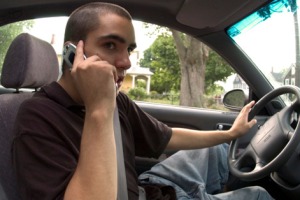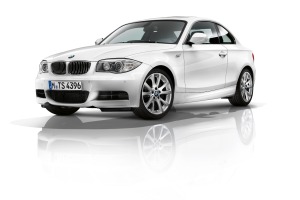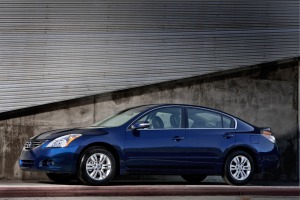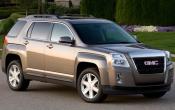Cell Phone Laws by State
Know the Hands-Free Cell Phone Laws for Each State and Certain Cities Before You Hit the Road

Driver distraction caused by the use mobile phones behind the wheel has become a hot button issue, with no less than U.S. Department of Transportation Secretary Lay LaHood making it a huge priority. Local and state legislatures continue to push to pass laws addressing the use of handheld phones by drivers. Yet, as of January 2010, only 7 states and the District of Columbia have banned driving while talking on a handheld phone, although more states have laws aimed at "novice drivers" (usually those under a certain age or with less than a full driver license) and school bus drivers.
But the explosive growth of text messaging has shifted policymakers' and the public's attention towards the potential greater danger of driving while texting (DWT). President Barack Obama even signed an executive order effective December 30, 2009 requiring all federal employees not to text while driving government-owned vehicles or with government-owned equipment, and in January 2010 the U.S. Department of Transportation Department announced a federal ban on texting by commercial drivers of interstate buses and large trucks over 10,000 pounds.
The District of Columbia and 19 states already ban DWT for all drivers with another nine states banning the practice for young drivers. Published reports indicate that as many as 23 more states are currently considering legislation banning DWT.
Vehicle manufacturers are also starting to address the issue. For example, Ford's Sync system can read aloud incoming text message and even translate commonly used emoticons and shorthand phrases such as "lol." The system also allows sending a series of canned responses, like "Can't Talk Right Now" or "Call Me Later."
Several cities, including Chicago and Detroit, have enacted their own laws against using a handheld phone while driving, but nine states have "preemption laws" that prohibit local governments from putting such laws on the books. Some of the various hands-free cell phone laws are primary violations, meaning you can be pulled over only for that particular infraction, while others are secondary, meaning you can be ticketed for it only if the police pull you over for another reason.
Several studies -- and just plain common sense -- tell us that it's best not to use a phone at all while behind the wheel. But if you have to talk on the phone while driving, make sure you know the law and do it only when it's safe, and while using a hands-free device.
We've compiled the chart below to help you keep abreast of the laws that may apply on your daily commute and distant travels. And since we expect hands-free laws to regularly change, check this page often -- and always drive safely, with both hands on the wheel and your eyes on the road.
| State | Handheld Ban |
All Cell Phone Ban - Novice Drivers |
Text Messaging Ban - All Drivers |
Text Messaging Ban - Novice Drivers |
| Alabama | 16, and 17 with intermediate license <6 months (Primary) | 16, and 17 with intermediate license <6 months (Primary) | ||
| Alaska | Yes (Primary) | Covered under all driver ban | ||
| Arizona | Covered under all driver ban | |||
| Arkansas | 18 - 20 years old (Primary) | <18 (Secondary) | Yes (Primary) | Covered under all driver ban |
| California | Yes (Primary) | <18 (Secondary) | Yes (Primary) | Covered under all driver ban |
| Colorado | Yes (Primary) | Yes (Primary) | Covered under all driver ban | |
| Connecticut | Yes (Primary) | Learners Permit and <18 (Primary) | Yes (Primary) | Covered under all driver ban |
| Delaware | Yes (Primary) (eff. 1/2/11) | Learner's permit and intermediate license holders (Primary) | Yes (Primary) (eff. 1/2/11) | Covered under all driver ban |
| District of Columbia | Yes (Primary) | Learners Permit (Primary) | Yes (Primary) | Covered under all driver ban |
| Florida | ||||
| Georgia | <18 (Primary) | Yes (Primary) | Covered under all driver ban | |
| Guam | Yes (Primary) | Covered under all driver ban | ||
| Hawaii1 | See footnote | |||
| Idaho2 | ||||
| Illinois3 | See footnote | <19 (Primary) | Yes (Primary) | Covered under all driver ban |
| Indiana | <18 (Primary) | <18 (Primary) | ||
| Iowa | Restricted or Intermediate Licenses (Primary) | Yes (Secondary) | Covered under all driver ban | |
| Kansas | Learner or Intermediate License (Primary) | Yes (Primary) | Covered under all driver ban | |
| Kentucky | <18 (Primary) | Yes (Primary) | Covered under all driver ban | |
| Louisiana | Learner or Intermediate License (regardless of age) | 1st year of licensure (Primary for <18) | Yes (Primary) | Covered under all driver ban |
| Maine4 | <18 (Primary) | <18 (Primary) | ||
| Maryland | Yes (Secondary) | <18 w/ Learner or Provisional License (Secondary) | Yes (Primary) | Covered under all driver ban |
| Massachusetts | <18 (Primary) | Yes (Primary) | Covered under all driver ban | |
| Michigan5 | See footnote | Yes (Primary) | Covered under all driver ban | |
| Minnesota | <18 w/ Learner or Provisional License (Primary) | Yes (Primary) | Covered under all driver ban | |
| Mississippi | Learner or Provisional License (Primary) | |||
| Missouri | <21 (Primary) | |||
| Montana | ||||
| Nebraska | <18 w/ Learners or Provisional License (Secondary) | Yes (Secondary) | Covered under all driver ban | |
| Nevada | ||||
| New Hampshire6 | Yes | Yes (Primary) | Covered under all driver ban | |
| New Jersey | Yes (Primary) | <21 w/ GDL or Provisional License (Primary) | Yes (Primary) | Covered under all driver ban |
| New Mexico | In State vehicles | |||
| New York | Yes (Primary) | Yes (Secondary) | Covered under all driver ban | |
| North Carolina | <18 (Primary) | Yes (Primary) | Covered under all driver ban | |
| North Dakota | ||||
| Ohio | ||||
| Oklahoma | Learners Permit or Intermediate License (Primary) | Learners Permit or Intermediate License (Primary) | ||
| Oregon | Yes (Primary) | <18 (Primary) | Yes (Primary) | Covered under all driver ban |
| Pennsylvania | ||||
| Rhode Island | <18 (Primary) | Yes (Primary) | Covered under all driver ban | |
| South Carolina7 | ||||
| South Dakota | ||||
| Tennessee | Learners Permit or Intermediate License (Primary) | Yes (Primary) | Covered under all driver ban | |
| Texas8 | Intermediate Stage, 1st 12 mos. (Primary) | Intermediate Stage, 1st 12 mos. (Primary) | ||
| Utah9 | See footnote | Yes (Primary) | Covered under all driver ban | |
| Vermont | <18 (Primary) | Yes (Primary) | Covered under all driver ban | |
| Virgin Islands | Yes | |||
| Virginia | <18 (Secondary) | Yes (Secondary) | Covered under all driver ban | |
| Washington | Yes (Primary) | Learner or Intermediate Stage (Primary) | Yes (Primary) | Covered under all driver ban |
| West Virginia | Learner or Intermediate Stage (Primary) | Learner or Intermediate Stage (Primary) | ||
| Wisconsin | Yes (Primary) | Covered under all driver ban | ||
| Wyoming | Yes (Primary) | Covered under all driver ban | ||
| Total | 8 + D.C., Virgin Islands | 28 + D.C. | 30 + D.C., Guam | 8 |
| Footnotes |
| 1 Hawaii does not have a state law banning the use of handheld cell phones. However, all of the state's counties have enacted distracted driving ordinances. |
| 2 Idaho has a "Distraction in/on Vehicle (List)" attribute as part of its Contributing Circumstances element, and officers are supposed to list the distractions in the narrative. |
| 3 Illinois bans the use of cell phones while driving in a school zone or in a highway construction zone. |
| 4 Maine has passed a law making it against the law to drive while distracted in the state. |
| 5 In Michigan, teens with probationary licenses whose cell phone usage contributes to a traffic crash or ticket may not use a cell phone while driving. |
| 6 Dealt with as a distracted driving issue; New Hampshire enacted a comprehensive distracted driving law. |
| 7 South Carolina has a Distracted/inattention attribute under Contributing Factors. |
| 8 Texas has banned the use of hand-held phones and texting in school zones. |
| 9 Utah's law defines careless driving as committing a moving violation (other than speeding) while distracted by use of a handheld cell phone or other activities not related to driving. |
Sources: Insurance Institute for Highway Safety, Governors Highway Safety Association and State Highway Safety Offices.







